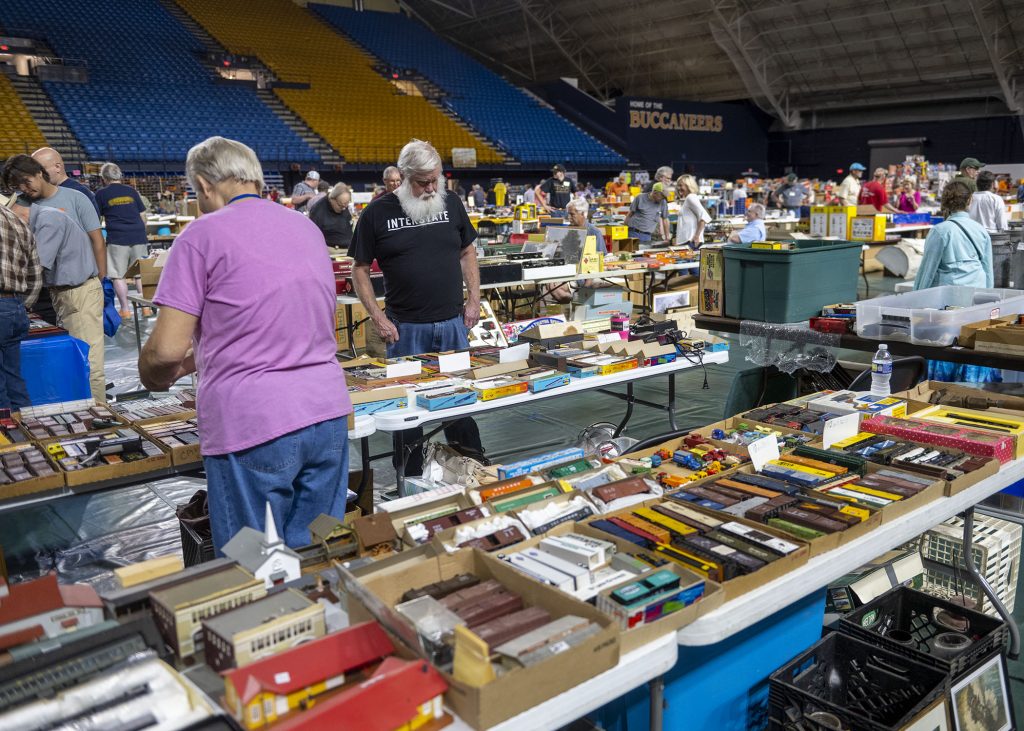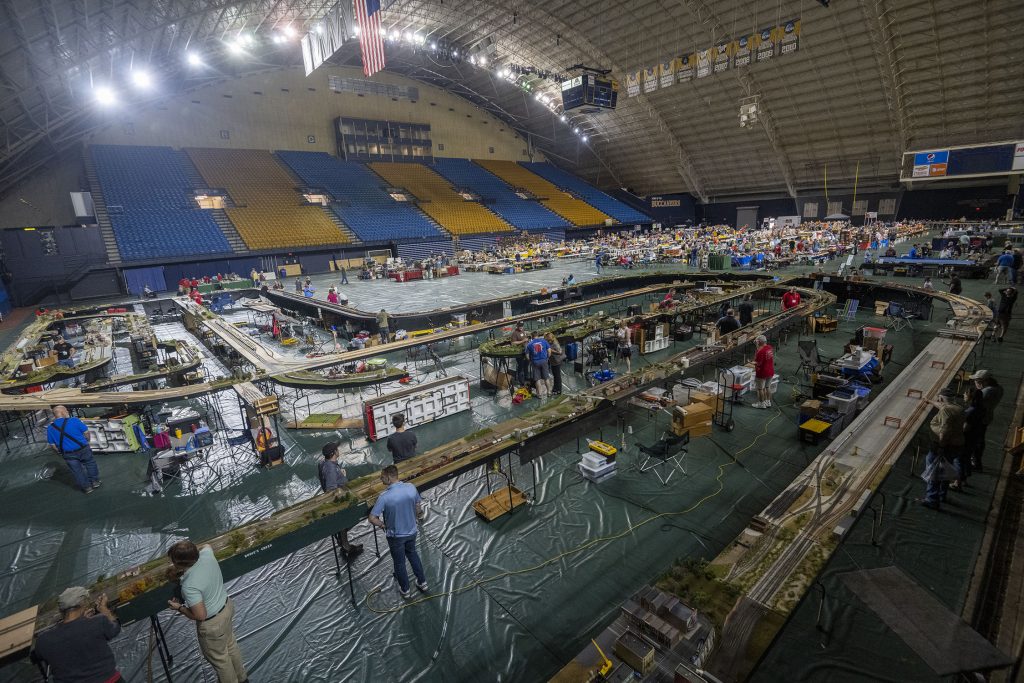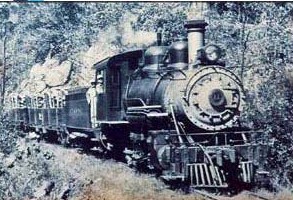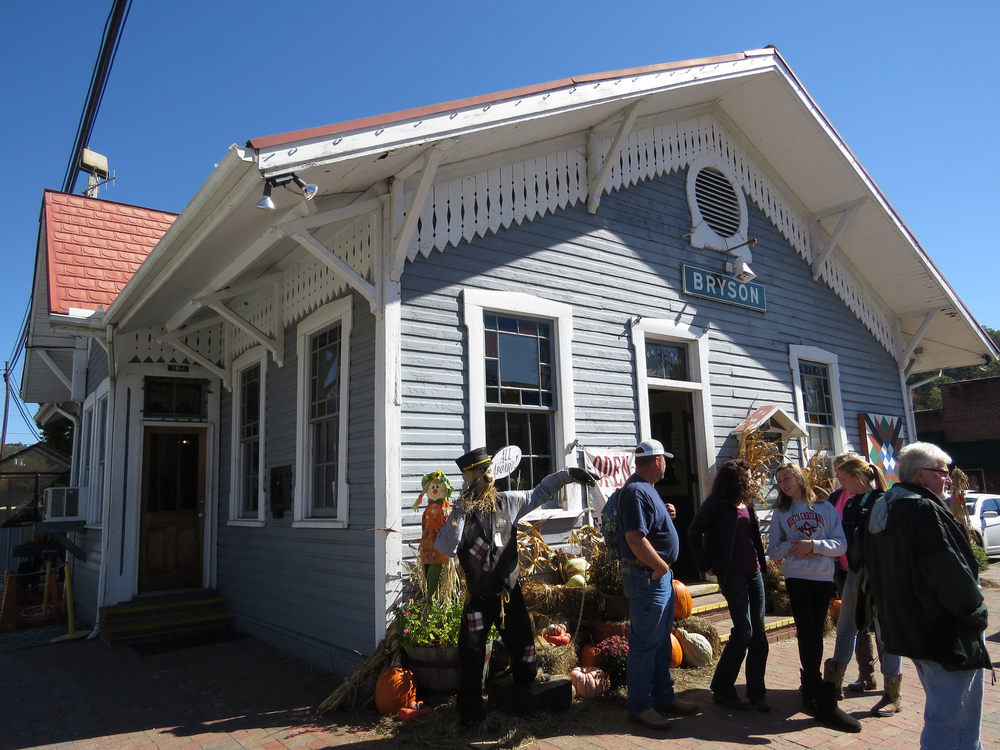Our 15 years on the ETSU campus has come to an end as the building is set for demolition. The Museum is TEMPORARILY closed until 2024 for the big move. Everything is in storage waiting for reassembly to begin in early October. It will take some time before we reopen because as one member said, “More than a little reassembly is required.” Subscribe for the latest update and an invitation to Grand Opening events. We look forward to reopening in early 2024 adjoining King’s Commons Park.
Webmaster
Governor Lee visits Carter County to see the rugged terrain and tunnel where the Tweetsie Trail will be expanded
Tweetsie Trail Expansion
Charles Warden, ETSU Staff Photographer – Captures the Big Train Show























Tiny Tweetsie: ETSU railroad museum volunteers working on most complete model replica of iconic railroad
Johnson City Press
Published July 30, 2012
By Rex Barber – Assistant News Editor/Online

The track has been laid for what will likely be the most complete model replica ever built on the iconic Tweetsie railroad. Fred Alsop, director of the George L. Carter Railroad Museum at East Tennessee State University, said volunteers at the museum have been constructing the replica for about 18 months now. Their efforts have resulted in a large twisting layout of tracks in a 1,300-squarefoot room in the ETSU Campus Center Building. “One of the most famous narrow-gauge railroads in eastern North America was the East Tennessee and Western North Carolina railway,” Alsop said. “It’s actually known as the Tweetsie.”
The Tweetsie line was constructed in the late 1800s. The Tweetsie tracks are mostly gone now, having ceased operation in the middle of the 20th century, but when it was active the line ran from Johnson City to Cranberry, N.C., first and was later extended to Boone, N.C. The distance from Johnson City to Cranberry by these rails was around 35 miles. The railroad was built to access the richest magnetic iron ore vein known at that time, which was near Cranberry. The track was only three-feet wide. Most tracks are four-feet, eight-inches wide.
It was not easy to send a locomotive through the mountains, but it was done by talented engineers who utilized the size of the narrow gauge to maneuver around the winding mountainous terrain. “A narrow railroad with smaller engines and smaller cars can get into places that bigger railroads cannot think of getting,” Alsop said. “But once it was there it was the most dependable transportation that a lot of people in East Tennessee had.” The Tweetsie line took children from the mountains down to schools in Carter County and
also brought workers to the factories of Elizabethton. The railroad crews also regularly arranged to deliver groceries to folks who lived along the tracks. One record claims a stove was delivered and installed by the train’s crew. “It was an important rail link,” Alsop said. “We felt that this is really Tweetsie country. And if we were going to model any local railroad there would be no finer railroad to model than this one.”
Museum volunteers are recreating the Tweetsie in HO scale, where one foot equals 87 feet. The track and cars are smaller to reflect the narrow-gauge width. A company in Maine actually made a limited production run of the Tweetsie locomotives. Alsop said four of those will operate on the display. Alsop, who also is a biology professor at ETSU, said plans for the museum always included recreating at least a portion of the Tweetsie, but the full path was decided upon after space became available. Work on the model began about 18 months ago. Trains should be running by Christmas. There are no kits for most of the structures planned for the layout, so they will all have to be built from scratch using photos, drawings and observations as guides.
There are thousands of trees to make, too. The landscape should be largely finished in a year, though, a train layout is never truly finished, Alsop said. “We’ve got featured landmarks all the way along,” Alsop said. “Some of them include the towns that the railroad went through. Some of them are not towns but they’re important points. It won’t be exact, we’ve got all kinds of limitations, but it should be recognizable . It should look like the Tweetsie.” One example of a featured landmark is from the Doe River Gorge. There is a cliff face there
that was cut into to make a bench for the tracks. This is called Pardee Point after the owner of the Tweetsie. “It was the most photographed part of the whole line,” Alsop said. Volunteers continue to walk the Tweetsie track bed, interview people who rode the train or worked on the line and investigate any literature available on Tweetsie.
The layout is shaping up to be the most complete replica ever created. “There
Looking Back at almost 16 years on the ETSU Campus as Museum prepares to Move

The final day of operation on the ETSU Campus was June 3rd in conjunction with the 2023 Big Train Show. As you can imagine there is a lot of disassembly and packing required before the move later this summer. Details about the new location and reopening will be posted this fall.




















